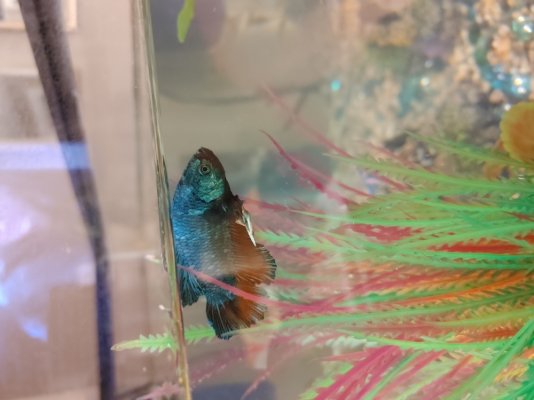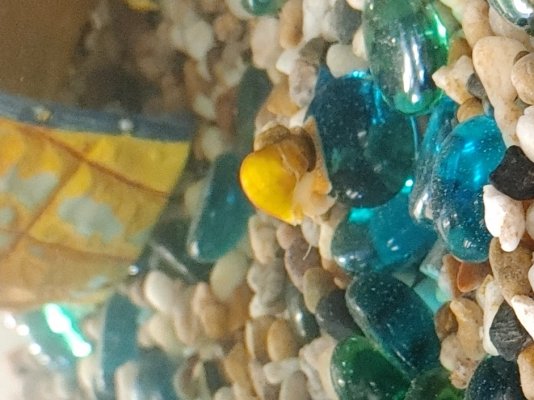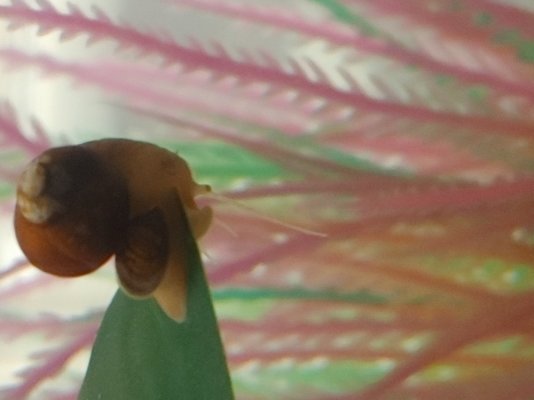If the fish has been in an aquarium with a filter for the last 2 months, the filter should be cycled. A cycled filter is simply a filter that is run continuously for a couple of months and has colonies of beneficial bacteria that eat ammonia and convert it into nitrite, and more good bacteria that eat nitrite and convert it into nitrate. As long as you don't change the filter media/ materials, the bacteria will live happily ever after and keep the water clean and free of ammonia and nitrite. You get rid of nitrates by doing big regular water changes, gravel cleaning the substrate cleaning the filter, and if possible, having live plants in the tank.
--------------------
CLEANING FILTERS
Depending on the type of filter, will determine how you clean it. But most filters are power filters (have a cord and are plugged into a power socket) or air operated sponge filters (use an air pump to pump air into a filter and that bubbles away in the aquarium. There are other filters too, including undergravel (plastic plates that sit underneath the gravel in the tank) and trickle filters that are normally a separate aquarium underneath the main tank and the two tanks are connected by a water pump and some pipe work. I doubt you have a trickle filter on a small tank, and undergravel filters are not regularly sold these days.
Power filters should be cleaned at least once a month, unless they are new. In which case they shouldn't be cleaned for the first 6-8 weeks. This it the time the beneficial filter bacteria are developing and attaching themselves to the filter media. The filter media is anything in the filter that traps gunk, holds good bacteria, or removes chemicals and heavy metals from the water. This includes filter pads, sponges, ceramic or plastic beads/ balls, carbon, zeolite, phosphate or nitrate removing substances. Basically, if it's in a filter and used by the filter for trapping gunk, holding bacteria, or removing things from water, it is filter media.
To clean a power filter:
1) Turn the filter off and unplug it from the power socket.
2) Take the filter media out and wash the filter materials/ media in a bucket of tank water and re-use the media when it has been cleaned. The bucket of dirty water can be poured on the lawn/ garden outside.
3) Wash the filter case and impellor assembly under tap water. The impellor assembly consists of a magnet with 3 or 4 plastic blades on one end, and a steel or ceramic shaft that goes through the middle of the magnet. There is normally a rubber grommet on either end of the shaft and sometimes a plastic washer between the grommet and impellor. Make sure you don't lose these bits because the pump won't work properly without them.
4) When the impellor, shaft and inside of the motor (where the impellor lives) are clean, put everything back together and put the filter back on/ in the tank.
*NB* The motors for power filters are normally sealed in a plastic resin and are unlikely to get water on the electrical components and blow up or burn out. So a bit of water splashed on the motor should not cause any problems.
If you have carbon (small black granulated substance) or Zeolite (small white granules) in the filter, these should be removed and replaced with some sponge.
Carbon adsorbs chemicals from water and is not normally needed in the average aquarium.
Zeolite adsorbs ammonia and interferes with the development of the good filter bacteria.
If you have filter pads/ cartridges in the filter, these can be replaced with sponge. But add some sponge to the filter and leave it with the filter pads for a couple of months, then throw the pads away. You can buy sponges for different brands of filter and use a pair of scissors to cut the sponge to fit your filter. Sponges last for years and get squeezed out in a bucket of tank water and re-used. I used AquaClear sponges but there are plenty of other brands. Just get one that is slightly bigger than the filter pad and cut it to fit.
--------------------
PRIMING FILTERS
If you have an internal power filter, just turn it back on when it is in the aquarium and under water.
If you have an external power filter, it should be filled with aquarium water before turning it on. A HOB (hang on back) style of filter (like a TopFin or AquaClear HOB) just hangs on the outside of the aquarium. Water is drawn up a pipe and pushed through filter media and flows back into the tank via and overflow in the filter. This type of filter gets filled with aquarium water and then turned on at the power point.
If you have an external canister filter, you connect them to the aquarium by 2 hoses. One hose is an intake and the other is a return. You have the intake hose in the aquarium, and the outlet/ return hose in an empty bucket. Suck on the return hose so water drains from the aquarium, into the filter. Let the filter fill with water and start flowing out of the return hose. Then put your thumb over the outlet of the return hose and put the hose in the aquarium. When it is fitted in the tank, turn the filter on.
--------------------
WATER CHANGES
Do a 50-75% water change and gravel clean the substrate once a week. The water changes and gravel cleaning will reduce the number of disease organisms in the water and provide a cleaner environment for the fish to live in.
Make sure any new water is free of chlorine/ chloramine before it is added to the tank.
You can buy a basic gravel cleaner from any pet shop or online. They should look similar to the one in the picture at the following link. The picture is about half way down the page under the title "Gravel cleaner", and above the title "Syphon hose with gravel cleaner". You want a syphon hose with gravel cleaner and a couple of clean buckets. Use a permanent marker to write "FISH ONLY" on the buckets and don't let anyone use those buckets for anything except the fish tank.
https://www.about-goldfish.com/aquarium-cleaning.html
----------
You do water changes for a number of reasons.
1) to reduce nutrients like ammonia, nitrite & nitrate.
2) to dilute disease organisms in the water.
3) to keep the pH, KH and GH stable.
4) to dilute nitric acid produced by fish food and waste breaking down.
5) to dilute stress chemicals (pheromones/ allomones) released by the fish.
6) to dilute un-used plant fertiliser so you don't overdose the fish when you add more.
7) to remove fish waste and other rotting organic matter.
Fish live in a soup of microscopic organisms including bacteria, fungus, viruses, protozoans, worms, flukes and various other things that make your skin crawl. Doing a big water change and gravel cleaning the substrate on a regular basis will dilute these organisms and reduce their numbers in the water, thus making it a safer and healthier environment for the fish.
If you do a 25% water change each week you leave behind 75% of the bad stuff in the water.
If you do a 50% water change each week you leave behind 50% of the bad stuff in the water.
If you do a 75% water change each week you leave behind 25% of the bad stuff in the water.
Fish live in their own waste. Their tank and filter is full of fish poop. The water they breath is filtered through fish poop. Cleaning filters, gravel and doing big regular water changes, removes a lot of this poop and harmful micro-organisms, and makes the environment cleaner and healthier for the fish.




